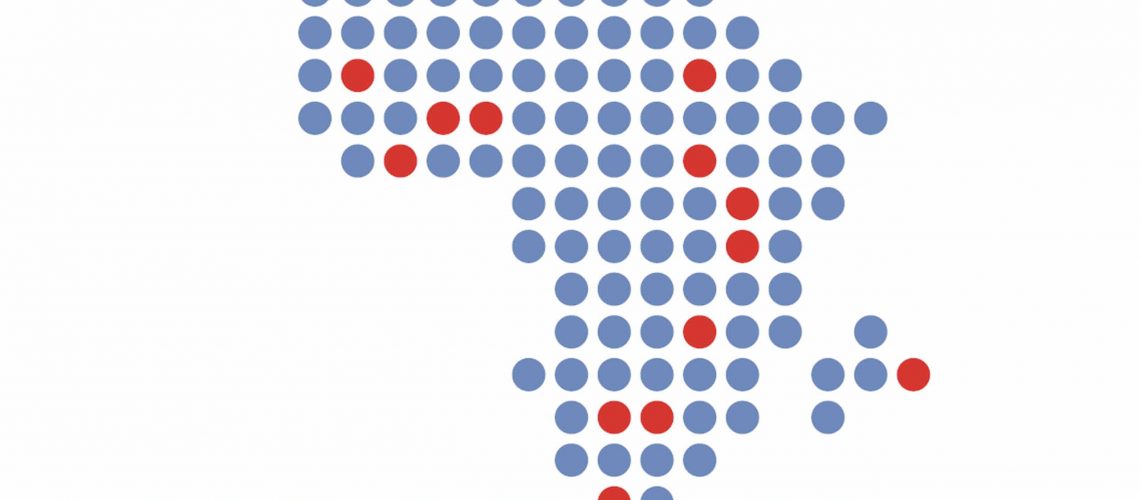Pan African Bioinformatics Network fro H3Africa
Aim
The course aims to provide an introduction to the field of bioinformatics, with a focus on
important bioinformatics tools, and resources.
The course aims to use a combination of theoretical and practical sessions in order for
participants to gain practical experience in using various tools and resources.
Intended Audience
The course is aimed at individuals from a molecular biology background who have a basic
understanding of biochemistry and/or genetics and would like to become bioinformatics
users. For an explanation on who ‘bioinformatics users’ might be, see Figure 2 in
http://journals.plos.org/ploscompbiol/article?id=10.1371/journal.pcbi.1003496. A baseline
level of the understanding of the central dogma of biology (DNA -> RNA -> Protein) is a
requirement.
Course logistics
• The course will run for approximately 3 months with 2 days (4 hours/day) of contact
time per week (exact dates to be confirmed).
• A distance-based learning model is used for this course.
• Trainers pre-record their lectures, which are downloaded and watched by the local
classrooms during contact sessions. This will be followed by a practical session,
during which participants will work through a practical assignment.
• Classrooms will be set up at different sites across Africa (dependent on resource
availability) and will link to the trainer via the Adobe Connect conferencing system
during contact sessions, during which questions may be asked to the trainer. The
trainers will also be available to answer questions via Vula – the course management
platform https://vula.uct.ac.za/portal.
• There will be appropriately trained local teaching assistants at each of the classroom
sites to assist with the practical components of the course and to liaise with the IBT
core team in coordinating the administration of the local classrooms.
• There will be an appropriately trained system administrator at each classroom site to
ensure that the classroom meets the technical requirements and to provide
technical support.
• The practical components of the course will be run using open source, online tools as
far as possible.
Course curriculum
Informed by responses from a previous survey sent out to H3Africa members, the course
curriculum will cover the following main themes (subject to slight changes):
• Bioinformatics resources and databases
– Introduction to bioinformatics, biological databases and resources (NCBI and
EBI), data formats, ontologies
• Linux
– Introduction to Linux, general overview of Linux environment, overview of
command line interface, navigating Linux directory structure, manipulating
files and directories, basic Linux commands
• Sequence alignment theory and applications
– Introduction to searching and sequence alignment, BLAST, pairwise sequence
alignment
• Multiple sequence alignment (MSA)
– MSA theory, generating and interpreting MSAs using various tools, visualising
and assessing MSA quality
• Genomics
– Overview of sequencing and annotation, Ensembl genome browser, Genetic
variation, HapMap, 1000 genomes
• Molecular evolution and phylogenetics
– Molecular evolution, phylogenetic approaches and methods (Introduction
and overview of methods)
Course objectives
By the end of the course participants should be able to:
• Explain the use of bioinformatics
• Name the key bioinformatics techniques and tools
• Locate important biological databases and retrieve data
• Use selected tools effectively to run specific bioinformatics analyses
• Understand the strengths and limitations of the various techniques
Course Requirements
In order to pass the course, participants are required to:
• Attend all contact sessions. Lecture recordings will be available on the course
website should it be logistically impossible for a participant to attend a lecture (these
cases will be noted and monitored).
• Submit 80% of practical assignments by the relevant hand-in date. Teaching
assistants and trainers will also be contactable via a forums tab on the course
management site, Vula, for additional support or if it is logistically impossible for a
participant to attend a particular practical session (these cases will be noted and
monitored).
• Submit assessments by the relevant hand-in date and obtain a minimum grade of
60% overall for the assessments.
Confidentiality
Please note that participants’ results for the IBT course (assignment and assessment scores)
will only be shared with the IBT core team and with the participant’s supervisor (as
indicated in this application form) if s/he asks for them. Aggregate results from your IBT
classroom will be shared with the PI for your IBT classroom (e.g. average grade), but the
classroom PI will not have access to participant’s individual results.
